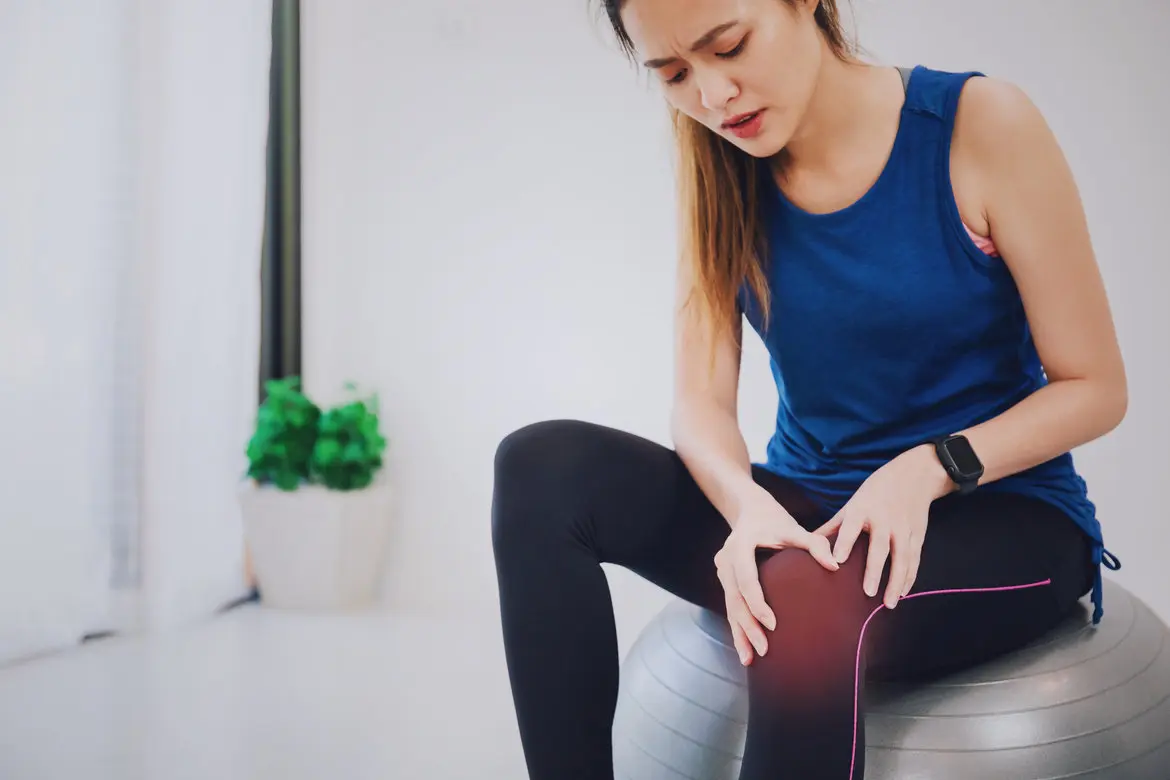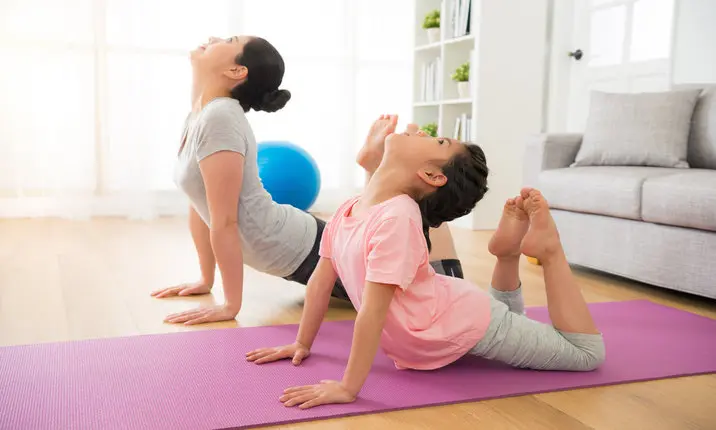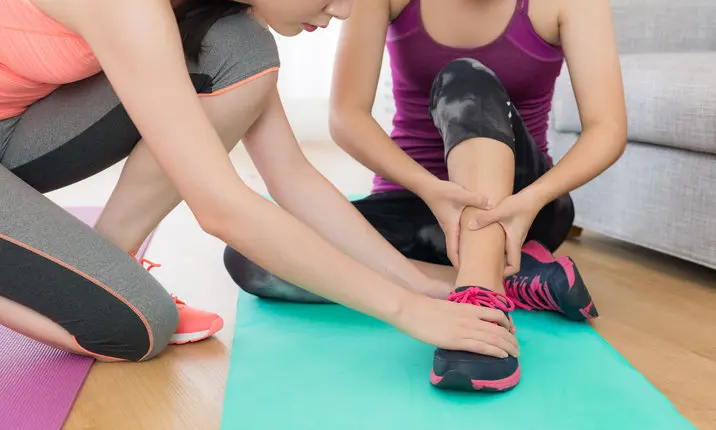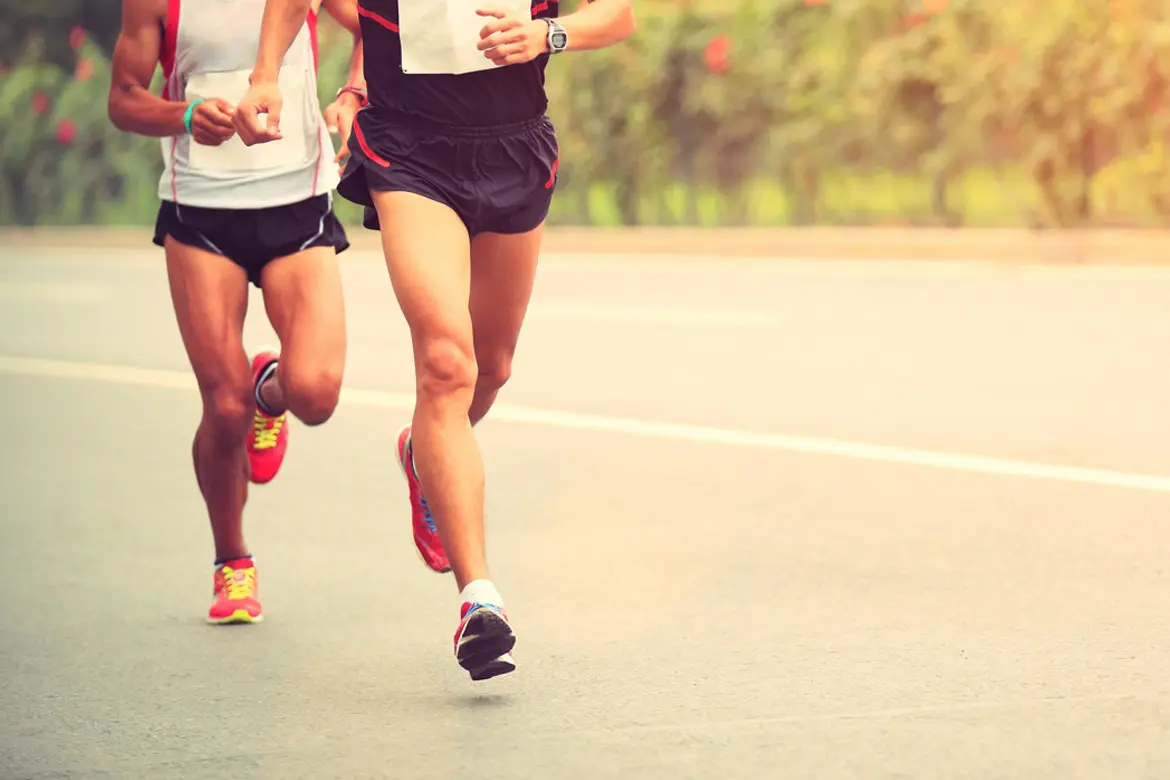-
-
Featured Care Areas


Source: Shutterstock
How to Avoid Injuries While Exercising at Home
Last updated: Wednesday, May 20, 2020 | 5 min reading time
**While we might be confined to improvised home workouts, let's make do with what's available to us, and keep these tips in mind to avoid getting injured. **
Many Singaporeans have been forced to abruptly change their lifestyles and hunker down at home in hopes of reducing COVID-19 transmissions.
As our and fitness centres have had to close, workouts have also had to be limited to open spaces in the immediate neighbourhood. The solution? Home workouts based on improvisation, or following online programs. What's often left unsaid, is the ever-present risk of injury, especially if you have pre-existing conditions such as weak joints, heart disease, high blood pressure, arthritis, kidney disease, or cancer. Some common workout injuries include:
- Pulled or strained muscles
- Knee injuries
- Shin splints
- Sprained ankles
- Shoulder injuries
- Wrist sprain or dislocation
- Overuse injuries like tendinitis
However, these injuries can be avoided as long as you follow these easy steps to ensure that you have an effective and safe workout at home. Here are some tips to help you avoid getting injured while exercising at home:
1. Check that your environment is suitable for exercise
Before you start burning those calories, choose a room that has sufficient space and ventilation to carry out your workout. The living room is typically the most ideal space. But make sure you clear out the floor area by removing any toys, books, or furniture which can potentially cause you to trip or fall. Check that you're in the clear by doing a 360-degree turn with your arms spread out. Ensure that the floor is not slippery or wet. Use a yoga mat if you will be engaging in stretches or exercises that require you to be on the floor.
2. Take care when exercising with kids
If you have young children (0 – 3 years old), it may be best to involve them in specific sets of parent-child friendly exercises. Their safety should always be top priority. Alternatively, squeeze in your workouts when your child is asleep or taken care of by someone else.
Exercising with preschoolers (3 – 5 years old) or older kids can be fun too, especially when you engage them in child friendly guided exercise programs such as Yoga disco or Zumba kids that are both fun and interactive. Your child has a fun time and you get fit – everybody wins!
3. Dress appropriately
Generally, you'll want to wear something loose-fitting and comfortable. However, you may need to adjust your outfit depending on the type of workout and equipment used.
For example, loose-fitting clothes may be better for static exercises such as marching, squats or lunges, that do not require you to climb over any equipment. On the contrary, loose-fitting pants are not ideal for climbing onto a stationary bike due to the risk of it getting caught on the seat. Clothes that are fitted and have stretchable fabrics are more suitable for Yoga and Pilates.
Footwear should be worn when performing high-impact activities to prevent any sports-related injuries. If you're running on a treadmill, it is optimal to wear running shoes that provide sufficient support for your feet. However, if you're exercising at home, do ensure that you do not wear shoes that have been worn outside of the house, unless you've disinfected them. There are also exercises, such as Yoga, that you can perform barefoot. In fact, barefoot workouts can potentially strengthen your feet and ankles.
4. Warm up and cool down
It's important to start every workout with a warm-up and end with a cool-down. Warming up and cooling down helps you ease into and out of an exercise session.
Warming up before exercising helps prepare your body by raising your body's temperature and increases blood flow to the important muscles and organs. Warming up also helps, improve the range of motion in your joints, reduce muscle soreness and reduces your risk for injury.
Cooling down, on the other hand, allows gradual recovery of your heart rate and blood pressure and returns your body to its pre-exercise state.
5. Personalise your workout
Personalise your workout according to your body's strengths and weaknesses.
In order to prevent injuries while exercising at home, you'll have to find out what exercises are suitable for you. For example, if you have knee problems, you should check with your doctor or physiotherapist on the types of exercises that are suitable before commencing on your exercise regime. The bottom line: Perform exercises that are safe for your condition and continue to improve any weaknesses in your body.
6. Vary your workout
Varying your workout will prevent you from overusing a particular set of muscles. Repeating the same movements regularly can lead to overuse injuries such as tendinitis or shin splints.
Focus on different parts of your body with each workout. For example, you can focus on running on the treadmill on one day and try weight lifting for your upper body on another day.
7. Stay hydrated and ensure you're well-rested
Make sure you drink enough water before, during, and after your workout. Inadequate hydration might compromise blood flow to the muscles you're working, which may increase your susceptibility to injury. You can also munch on a healthy snack after your workout to replenish your energy stores. It is important to ensure adequate nutrition for optimal recovery. It is also important to take 1 – 2 days off to allow your body to rest and recover between workouts.
When to seek medical attention
Unfortunately, injuries may still happen even if you are careful. In this case, it is best to check with your doctor before exercising. If you experience any of the following symptoms during exercise, stop immediately and seek medical attention:
- Sudden pressure, tightness or sharp, intense pain especially in the chest, neck, or jaw
- Severe shortness of breath or wheezing with mild exertion
- Dizziness and faintness, loss of consciousness with exercise or exertion
- Joint swelling at night
- A rapid or pronounced heartbeat
- Palpitations or irregular heartbeat
- Unusual sweating
- Nausea and vomitting
- Symptoms that do not go away after rest
6 Ways to Avoid Workout Injuries, Retrieved 6/5/2020 from https://www.webmd.com/fitness-exercise/features/6-ways-avoid-workout-injuries#1
Aerobic exercise: How to warm up and cool down, Retrieved 6/5/2020 from https://www.mayoclinic.org/healthy-lifestyle/fitness/in-depth/exercise/art-20045517
American College of Sports medicine. (2013). ACSM's guidelines for exercise testing and prescription. Lippincott Williams & Wilkins.
Brukner P. (2012). Brukner & Khan's Clinical Sports Medicine. North Ryde: McGraw-Hill.
Is It OK to Exercise Barefoot?, Retrieved 7/5/2020 from https://www.livestrong.com/article/472431-is-it-ok-to-exercise-barefoot/
We're All Doing At-Home Workouts Now–Here's How Not to Get Injured, Retrieved 6/5/2020 from https://www.health.com/fitness/prevent-at-home-workout-injuries
What stores remain open, and what stores have to close during the circuit breaker period?, Retrieved 6/5/2020 from https://www.gov.sg/article/what-stores-remain-open-and-what-stores-have-to-close-during-the-circuit-breaker-period
Workout Injuries: Prevention and Treatment, Retrieved 6/5/2020 from https://www.webmd.com/fitness-exercise/guide/workout-injuries-prevention-and-treatment#1
Aerobic exercise: How to warm up and cool down, Retrieved 6/5/2020 from https://www.mayoclinic.org/healthy-lifestyle/fitness/in-depth/exercise/art-20045517
American College of Sports medicine. (2013). ACSM's guidelines for exercise testing and prescription. Lippincott Williams & Wilkins.
Brukner P. (2012). Brukner & Khan's Clinical Sports Medicine. North Ryde: McGraw-Hill.
Is It OK to Exercise Barefoot?, Retrieved 7/5/2020 from https://www.livestrong.com/article/472431-is-it-ok-to-exercise-barefoot/
We're All Doing At-Home Workouts Now–Here's How Not to Get Injured, Retrieved 6/5/2020 from https://www.health.com/fitness/prevent-at-home-workout-injuries
What stores remain open, and what stores have to close during the circuit breaker period?, Retrieved 6/5/2020 from https://www.gov.sg/article/what-stores-remain-open-and-what-stores-have-to-close-during-the-circuit-breaker-period
Workout Injuries: Prevention and Treatment, Retrieved 6/5/2020 from https://www.webmd.com/fitness-exercise/guide/workout-injuries-prevention-and-treatment#1










